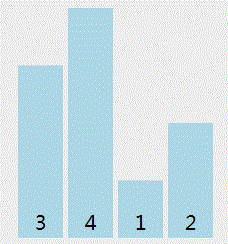判断数组是否包含某个值
let arr = ['a', 'b', 'c'];
console.log(arr.includes('d'));
// false
console.log(arr.includes('b'));
// true- 延申:判断字符串是否包含其他字符串
let str = '判断字符串是否包含其他字符串' str.startsWith("判断") // true str.endsWith("666") // false str.includes("是否") // true str.includes("复制") // false
快速复制数组
const arr = [1, 2, 3, 4];
const sameArr = [...arr];
console.log("arr: ", arr, "\n", "sameArr: ", sameArr);
// arr:[1, 2, 3, 4]
// sameArr:[1, 2, 3, 4]快速合并数组
const arr1 = [1, 2, 3];
const arr2 = [4, 5, 6];
const arr3 = [7, 8, 9];
const mergedArr = [...arr1, ...arr2, ...arr3];
console.log("mergedArr: ", mergedArr);
// mergedArr:[1, 2, 3, 4, 5, 6, 7, 8, 9]new Set 数组合并去重
const arr1 = [1, 2, 3];
const arr2 = [3, 2, 1];
const arr3 = [7, 8, 9];
const mergedArr = Array.from(new Set([...arr1, ...arr2, ...arr3]))
console.log("mergedArr: ", mergedArr);
// mergedArr:[1, 2, 3, 7, 8, 9]new Set 数组对象去重
const arr1 = [
{ name: "张三", age: 18, address: "北京" },
{ name: "李四", age: 20, address: "天津" },
{ name: "张三", age: 18, address: "北京" },
];
const stringsArr1 = arr1.map((item) => JSON.stringify(item)) // 1、转化成string类型
const removeDupList = Array.from(new Set(stringsArr1)) // 2、转化为真正的数组
const mergedArr = removeDupList.map((item) => JSON.parse(item)) // 3、字符串类型转化为对象类型
console.log("mergedArr: ", mergedArr);
// mergedArr: [{ name: "张三", age: 18, address: "北京" },{ name: "李四", age: 20, address: "天津" }]快速过滤掉相同元素
const arr = [1, 1, 2, 3, 4, 5, 5, 2, 8, 9, 6];
const uniqueArr = [...new Set(arr)];
console.log("uniqueArr: ", uniqueArr);
// uniqueArr: [1, 2, 3, 4, 5, 8, 9, 6]Tips
ES6 之 new Set()
- Set 是 es6 新增的数据结构,似于数组,但它的一大特性就是所有元素都是唯一的,没有重复的值,我们一般称为集合。
- Set 对象方法
- add 添加某个值,返回 Set 对象本身
- clear 删除所有的键/值对,没有返回值
- delete 删除某个键,返回 true,如果删除失败,返回 false
- forEach 对每个元素执行指定操作
- has 返回一个布尔值,表示某个键是否在当前 Set 对象之中
// Array 转 Set var mySet = new Set(["value1", "value2", "value3"]); // 用...操作符,将 Set 转 Array var myArray = [...mySet]; // String 转 Set var mySet = new Set("hello"); // Set(4) {"h", "e", "l", "o"} // 注:Set 中 toString 方法是不能将 Set 转换成 String Set 对象作用 // 数组去重 var mySet = new Set([1, 2, 3, 4, 4]); [...mySet]; // [1, 2, 3, 4] // 并集 var a = new Set([1, 2, 3]); var b = new Set([4, 3, 2]); var union = new Set([...a, ...b]); // {1, 2, 3, 4} // 交集 var a = new Set([1, 2, 3]); var b = new Set([4, 3, 2]); var intersect = new Set([...a].filter((x) => b.has(x))); // {2, 3} // 差集 var a = new Set([1, 2, 3]); var b = new Set([4, 3, 2]); var difference = new Set([...a].filter((x) => !b.has(x))); // {1}
- Set 是 es6 新增的数据结构,似于数组,但它的一大特性就是所有元素都是唯一的,没有重复的值,我们一般称为集合。
过滤符合条件的数组项
const fruits = [
"apple",
"banana",
"pear",
"watermelon",
"strawberry",
"arbutus",
];
const hFruits = fruits.filter((fruit) => fruit.startsWith("a"));
console.log("hFruits: ", hFruits);
// hFruits: ["apple", "arbutus"]检查数组中的某些项目是否匹配条件
const arr1 = [2, 4, 6, 8, 10];
const arr2 = [2, 4, 6, 8, 9];
const isEven = (num) => {
if (num % 2 === 0) {
return true;
}
};
console.log(arr1.every(isEven)); // true
console.log(arr2.every(isEven)); // false数组的交集
const arr1 = [1, 2, 3, 4, 5];
const arr2 = [4, 5, 6, 7, 8, 9];
const intersection = arr1.filter((num) => arr2.includes(num));
console.log(intersection); // [4, 5]筛选数组的差异部分
// 法一
const arr1 = [1, 2, 3, 4, 5];
const arr2 = [4, 5, 6, 7, 8, 9];
const difference = arr1.filter((num) => !arr2.includes(num));
const allDifference = [
...arr1.filter((num) => !arr2.includes(num)),
...arr2.filter((num) => !arr1.includes(num)),
];
console.log(difference); // [1, 2, 3]
console.log(allDifference); // [1, 2, 3, 6, 7, 8, 9]
// 法二
// 比较两个数组,然后返回一个新数组,该数组为两个数组的差异部分,与allDifference同理
function diff(arr1, arr2) {
var newArr = [];
arr1 = Array.from(new Set(arr1)); // 去重
arr2 = Array.from(new Set(arr2)); // 去重
newArr =arr1.concat(arr2);
return newArr.filter(x=>!(arr1.includes(x) && arr2.includes(x)))
}
diff([1, 2, 3, 5], [1, 2, 3, 4, 5]); // [4]对数组中的项目进行排序
const numbers = [52, 9, 23, 16, 20, 99];
// 升序
const asc = [...numbers.sort((a, b) => a - b)];
console.log(asc); // [9, 16, 20, 23, 52, 99]
// 降序
const desc = [...numbers.sort((a, b) => b - a)];
console.log(desc); // [99, 52, 23, 20, 16, 9]Tips
冒泡排序
- 实现原理
- 数组中有 n 个数,比较每相邻两个数,如果前者大于后者,就把两个数交换位置;这样一来,第一轮就可以选出一个最大的数放在最后面;那么经过 n-1(数组的 length - 1) 轮,就完成了所有数的排序。

- 数组中有 n 个数,比较每相邻两个数,如果前者大于后者,就把两个数交换位置;这样一来,第一轮就可以选出一个最大的数放在最后面;那么经过 n-1(数组的 length - 1) 轮,就完成了所有数的排序。
var arr = [3, 4, 1, 2];
function bubbleSort(arr) {
var max = arr.length - 1;
for (var j = 0; j < max; j++) {
// 声明一个变量,作为标志位
var done = true;
for (var i = 0; i < max - j; i++) {
if (arr[i] > arr[i + 1]) {
var temp = arr[i];
arr[i] = arr[i + 1];
arr[i + 1] = temp;
done = false;
}
}
if (done) {
break;
}
}
return arr;
}
bubbleSort(arr);
// 1、外层 for 循环控制循环次数
// 2、内层 for 循环进行两数交换,找每次的最大数,排到最后
// 3、设置一个标志位,减少不必要的循环数组对象树结构的筛选
function filterTree(nodes, query) {
// 条件就是节点的title过滤关键字
let predicate = function (node) {
if (node.title.includes(query)) {
return true;
} else {
return false;
}
};
// 结束递归的条件
if (!(nodes && nodes.length)) {
return [];
}
let newChildren = [];
for (let node of nodes) {
// 一、带父节点 以下两个条件任何一个成立,当前节点都应该加入到新子节点集中
// 1. 子孙节点中存在符合条件的,即 subs 数组中有值
// 2. 自己本身符合条件
let subs = this.filterTree(node.children, query);
if (predicate(node)) {
newChildren.push(node);
} else if (subs && subs.length) {
node.children = subs;
newChildren.push(node);
}
// // 二、不带父节点 以下只需要考虑自身的节点满足条件即可,不用带上父节点
// if (predicate(node)) {
// newChildren.push(node);
// node.children = this.filterTree(node.children, query);
// } else {
// newChildren.push(...this.filterTree(node.children, query));
// }
}
return newChildren.length ? newChildren : [];
}


